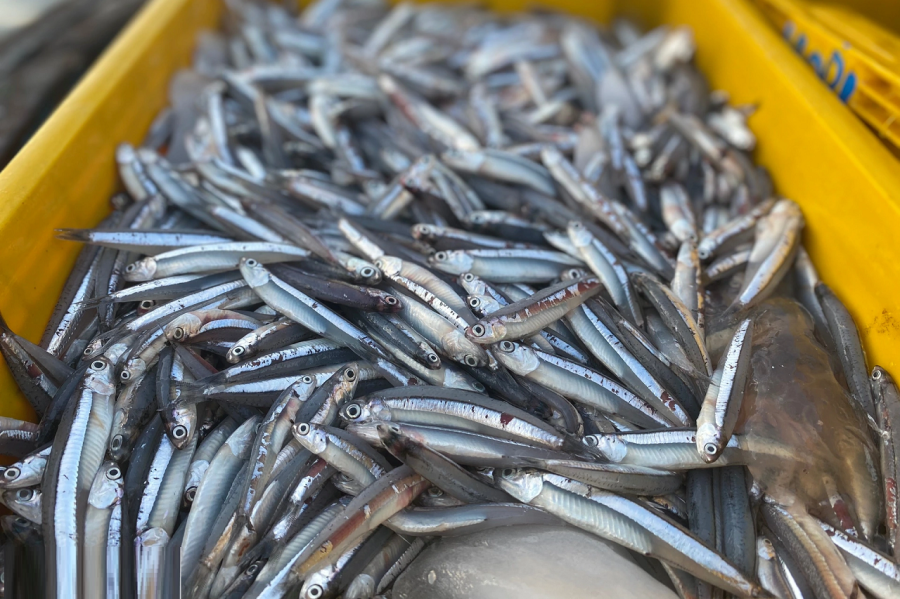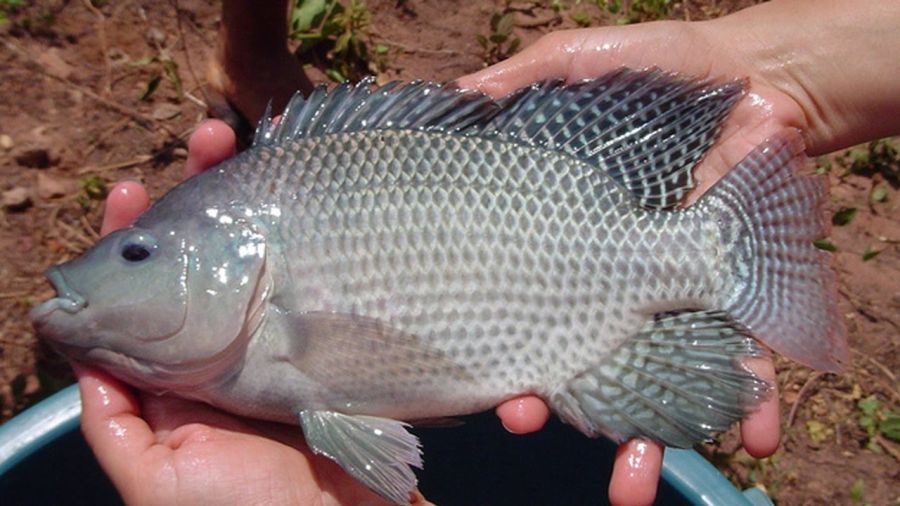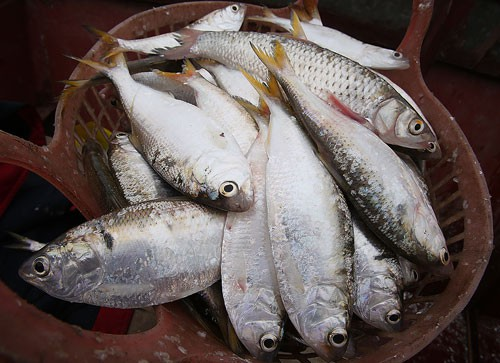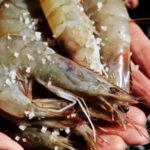Differentiating Wild and Farmed Fish
For Fish in the Wild
Most types of wild river fish share the common characteristics of having slender bodies and small bellies, in contrast to farmed fish which have shorter bodies and larger bellies.
According to a fish seller, the reason for this is that fish in the wild have to move and look for food on their own, without readily available food, so their bodies develop in such a way. However, wild river fish are usually priced much higher, 6 to 10 times higher than farmed fish.
In addition, when you look at the head of a wild river fish, you will always find that it is small, the body is long, and the belly is slim. When you examine the fins, tail, and whiskers of the fish, you will find that they are usually longer than those of farmed fish. When you dissect them, you will find that their intestines and stomachs are smaller, and when you cut through the fish, you will feel that the fish meat is crunchy…
For Farmed Fish
If you pay attention, you will notice that farmed fish have full bellies and shorter heads. This is because they are constantly fed food throughout the day to gain weight. Therefore, they have rounder and plumper bodies because they are less active.
Furthermore, it is difficult for a wild fish to weigh more than 2 kg because they have to search for food. On the other hand, farmed fish can weigh quite a lot depending on the species, but on average, they weigh between 2-3 kg.
4 Types of Fish Exclusive to the Wild, not for Weight Gain
Rainbow Smelt
When it comes to fish that are rich in omega-3 fatty acids, protein, vitamins, and minerals, the first one is the rainbow smelt. Buyers can rest assured because this fish lives in a saltwater environment, has a short life cycle, and is usually caught and sold without being farmed. It is not fed anything that could be harmful to health. In July 2019, the U.S. Food and Drug Administration (FDA) also listed rainbow smelt as one of the best types of fish.

Common Carp
Common carp is a freshwater fish that grows fast, can withstand high temperatures, and is easily adaptable. It is loved by many people for its delicious taste and rich nutrients. However, farmed common carp also faces the challenge of not being able to be artificially bred. First of all, common carp is a large fish that feeds on grass and its main diet is aquatic plants and small organisms. However, it is very difficult to provide enough supply of aquatic plants in an artificial breeding environment, which poses a challenge for solving the fish’s food problems in artificial breeding.
Secondly, common carp has a unique reproduction method and requires certain natural environment conditions to successfully reproduce. It is difficult to simulate the environment that meets the reproductive needs of common carp in artificial breeding.
Although farming common carp is challenging, it is rich in high-quality protein, unsaturated fatty acids, and various minerals. Common carp is a soft and protein-rich fish, which helps promote muscle growth and maintain tissue repair. In addition, common carp is rich in omega-3 fatty acids, which are good for cardiovascular health and brain blood vessels.

Yellowfin Goby
Yellowfin goby is a small, delicious seafood with a soft texture and unique flavor. However, there are primarily two reasons why it is difficult to farm yellowfin goby. Firstly, yellowfin goby is a migratory species with a complex living history and needs to migrate regularly between rivers and the ocean. Artificial reproduction cannot provide a suitable migratory environment, so yellowfin gobies cannot complete their natural reproductive and development processes.
Secondly, the food chain of yellowfin goby is relatively complex, and their diet relies heavily on a large amount of detritus and small benthic animals. This makes it difficult to meet their diverse food needs in a captive environment, resulting in growth limitations.
Although yellowfin goby is difficult to farm, it is rich in protein, unsaturated fatty acids, and synthetic vitamins, which are highly beneficial for human health. It is a low-fat fish, rich in protein, which helps promote muscle growth, strengthen the immune system, and improve cardiovascular health.
Freshwater Goby
Freshwater goby is rich in vitamins, calcium, and beneficial minerals such as iron, zinc, and potassium. Freshwater goby has a silver-white body, tender flesh, and many small bones. Although some people dislike it because of the bones, it is a fish that is richer in calcium than milk.

Freshwater goby is a 100% natural fish that lives both in rivers and in the ocean. For every 85 grams of freshwater goby, you get 325mg of calcium, compared to 276mg of calcium in 85 grams of milk. By consuming only 10 grams of freshwater goby, you can ensure an adequate supply of essential fatty acids for your body every day. Furthermore, freshwater goby is a rich source of vitamin D and DHA, which help strengthen the immune system and are beneficial for pregnant women and the elderly.
In addition to protein, freshwater goby is also rich in omega-3 fatty acids, EPA, and DHA. These essential fatty acids help promote smooth blood circulation in the body, maintain a healthy heart, and prevent cardiovascular diseases.
Expert Advice on How to Identify Unsafe Food
Are you aware of how to inspect food for possible safety risks? With the presence of food products from unclear origins and chemicals used as preservatives, it is important to be vigilant in selecting food items for our families. Join us in the Food Tips section to take a closer look at how to select safe and healthy food for our families!






































